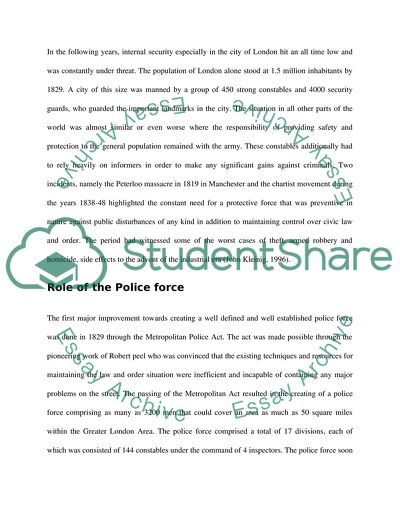Cite this document
(Evolution of the UK Police Force from 1829 till Present Coursework, n.d.)
Evolution of the UK Police Force from 1829 till Present Coursework. Retrieved from https://studentshare.org/history/1721639-critically-analyse-how-the-police-role-has-changed-from-1829-to-the-present-and-assess-whether-the-police-now-serve-a-greater-social-control-function-than-they
Evolution of the UK Police Force from 1829 till Present Coursework. Retrieved from https://studentshare.org/history/1721639-critically-analyse-how-the-police-role-has-changed-from-1829-to-the-present-and-assess-whether-the-police-now-serve-a-greater-social-control-function-than-they
(Evolution of the UK Police Force from 1829 till Present Coursework)
Evolution of the UK Police Force from 1829 till Present Coursework. https://studentshare.org/history/1721639-critically-analyse-how-the-police-role-has-changed-from-1829-to-the-present-and-assess-whether-the-police-now-serve-a-greater-social-control-function-than-they.
Evolution of the UK Police Force from 1829 till Present Coursework. https://studentshare.org/history/1721639-critically-analyse-how-the-police-role-has-changed-from-1829-to-the-present-and-assess-whether-the-police-now-serve-a-greater-social-control-function-than-they.
“Evolution of the UK Police Force from 1829 till Present Coursework”, n.d. https://studentshare.org/history/1721639-critically-analyse-how-the-police-role-has-changed-from-1829-to-the-present-and-assess-whether-the-police-now-serve-a-greater-social-control-function-than-they.


